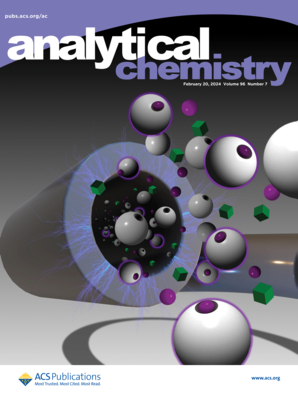Digital Redepleted of Stimulated Emission Depletion Microscopy for Noise Reduction and Resolution Improvement
IF 6.7
1区 化学
Q1 CHEMISTRY, ANALYTICAL
引用次数: 0
Abstract
Stimulated emission depletion microscopy (STED) achieves resolution beyond the diffraction limit by employing a donut-shaped depletion laser that selectively reduces fluorescence at the periphery of the excitation area. The imaging quality of STED microscopy is closely tied to minimizing the intermediate light from the ring-depletion laser. In this study, we introduce a method termed “digital redepleted STED,” which uses frequency domain filtering to generate an optimal donut profile by subtracting the “perfect donut” signal from the original STED data. This approach effectively reduces background noise and enhances the STED resolution. Through simulation experiments, we demonstrate that digitally redepleted STED doubled the resolution. This method is compatible with a wide range of biological samples and can be adapted for two-organelle-structure STED and 3D STED applications. We compare the performance of digitally redepleted STED with that of digitally enhanced STED (De STED) and deconvolution methods (STED Decon) in terms of the signal-to-background ratio (SBR) and resolution as evaluation metrics, and we find that our method doubled the resolution and SBR for different samples compared with origin STED. Our results indicate that digitally redepleted STED outperforms both De STED and STED Decon for complicated sample like mitochondria. We anticipate that the digitally redepleted STED will have broad applicability due to its enhanced resolution, improved SBR, and ease of implementation.

求助全文
约1分钟内获得全文
求助全文
来源期刊

Analytical Chemistry
化学-分析化学
CiteScore
12.10
自引率
12.20%
发文量
1949
审稿时长
1.4 months
期刊介绍:
Analytical Chemistry, a peer-reviewed research journal, focuses on disseminating new and original knowledge across all branches of analytical chemistry. Fundamental articles may explore general principles of chemical measurement science and need not directly address existing or potential analytical methodology. They can be entirely theoretical or report experimental results. Contributions may cover various phases of analytical operations, including sampling, bioanalysis, electrochemistry, mass spectrometry, microscale and nanoscale systems, environmental analysis, separations, spectroscopy, chemical reactions and selectivity, instrumentation, imaging, surface analysis, and data processing. Papers discussing known analytical methods should present a significant, original application of the method, a notable improvement, or results on an important analyte.
 求助内容:
求助内容: 应助结果提醒方式:
应助结果提醒方式:


